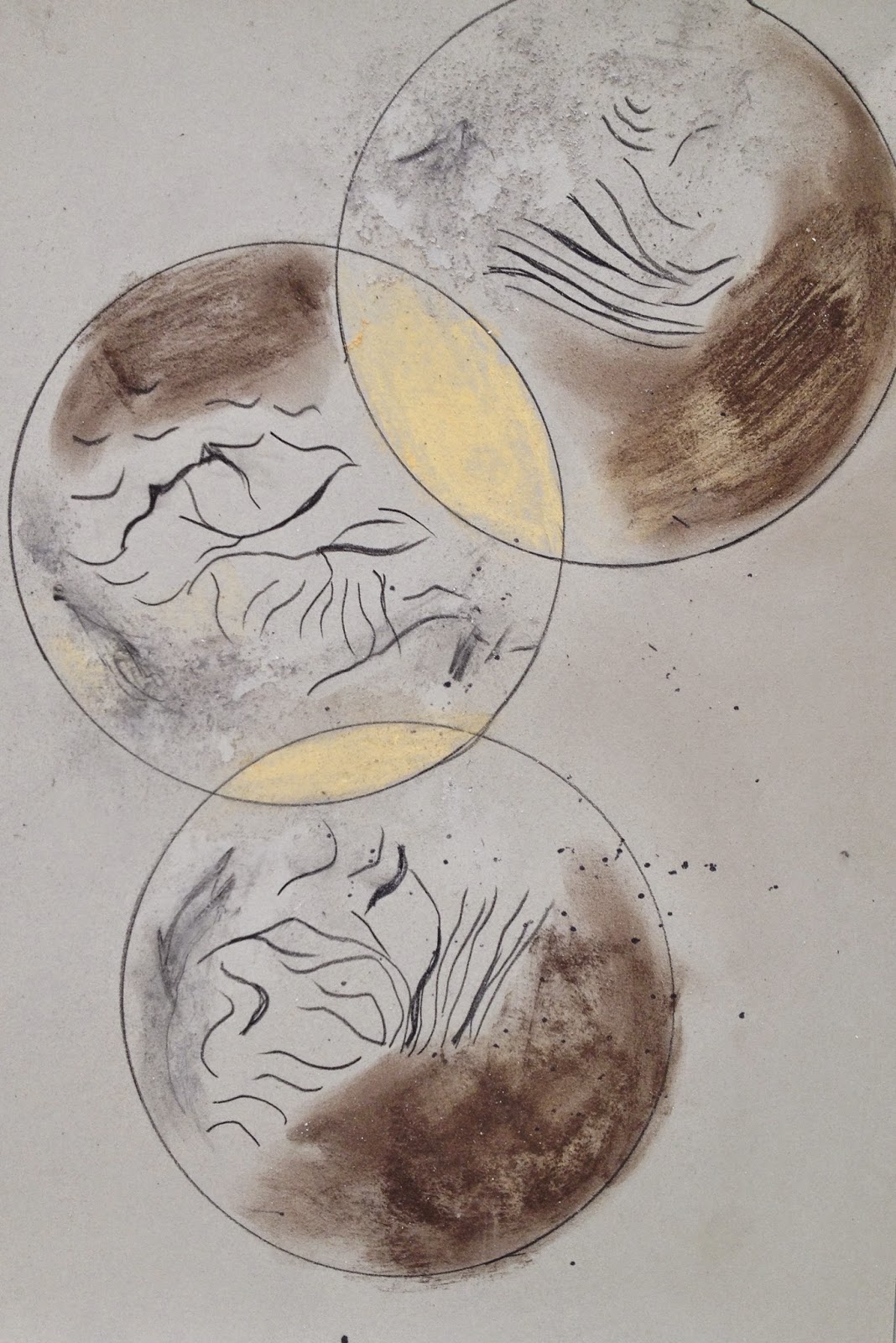On the walk were several other fascinating creative people and we had all been invited to accompany Clare and Charlotte as they walked the ancient tide line of the sea across the Pevensey Levels.
For me it was the first day back of school term, the first time I had the opportunity to work after the Christmas holidays and the first time I had met all these interesting people. It triggered a whole body of work, extending ideas and parallels with the work I had been doing previously. I had been looking at landscape searching for line and curve within it and eroding layers to create complex surfaces using Charcoal and gesso on board.
The walk threw up so many ideas it was almost too difficult to keep track of them and after trying a few out I realised the effect of the walk was going to be more fundamental than just a new idea for a piece of work.
So I left them all in the sketch book and just carried on working... this allowed the work to evolve informed by this very tangible experience ...and this was just from one walk!
Clare and Charlotte created Water Week 2 in order to embrace all the input and connections they had made during the residency and also to provide a space for any artists to contribute work which had been inspired or made influenced by the walks. (they did several with other artists).
I was delighted to be able to contribute 4 boards and to offer Water line, an action drawing, on the Saturday afternoon at the Castle.
It was amazing to see my work placed in the location of the Castle imbued with time, history and purpose. It made me even more aware of how important location and context is to art work.
Water line is a departure from In line, a drawing made by skating through pigment, charcoal and ash.
In line (detail)
Water line uses the location and nothing more, the sun dries the water and drawings can be made repeatedly. My 3 children joined in with Water line and it kept them occupied for 2 hours, skating and scooting delighted with the marks and lines they were creating and building up together.
drawing moat water
seam 2 - pigment, gesso and charcoal on board
seam 1 - pigment, gesso and charcoal on board
deposit - pigment, gesso and charcoal on board
boundary- pigment, gesso and charcoal on board
Boundary in the Castle
Deposit in Gallery North, Hailsham



















.jpg)
.jpg)
.jpg)
.jpg)
.jpg)
























